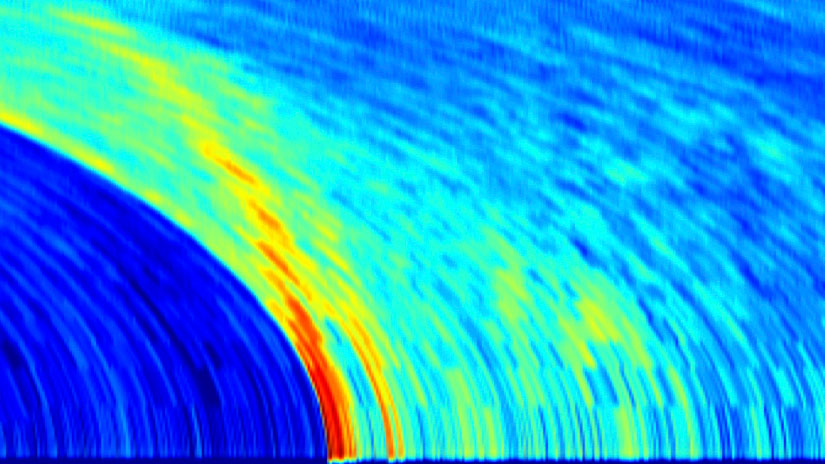This is what thunder looks like
Acoustic power of lightning bolts imaged for the first time

The first 'photos' of the sound waves that emanate from lightning bolts have been taken by geophysicists at the Southwest Research Institute.
"Lightning strikes the Earth more than 4 million times a day, yet the physics behind this violent process remain poorly understood," said Maher Dayeh, a research scientist at the institute, who was part of the team who captured the images.
We know why thunder happens - it's the sound of air being heated almost instantly to a temperature about three times hotter than the surface of the sun - but we don't know exactly how that process happens in the air. By looking at the sound pressure created by different parts of the lightning bolt, the researchers hoped to learn more about the origins of thunder and the physics of the lightning that causes it.
Lightning is unpredictable, so rather than putting down their instruments in a storm and hoping a bolt might strike nearby, the team induced strikes by shooting rockets into storm clouds with a grounded copper wire trailing behind - as shown in the video above. An array of fifteen microphones, each one metre apart, were positioned 95 metres from the launchpad. This array allowed the researchers to capture the vertical profile of the bolt.
"At first I thought the experiment didn't work," said Dayeh. "The initial constructed images looked like a colourful piece of modern art that you could hang over your fireplace." But when the team examined different sound frequency bands, they were able to see a distinct thunderbolt.
The next step for the researchers is to examine the acoustic signatures of different types of lightning - current pulses, step leader branches, and discharge channel zigzags - independently.
Sign up for breaking news, reviews, opinion, top tech deals, and more.
